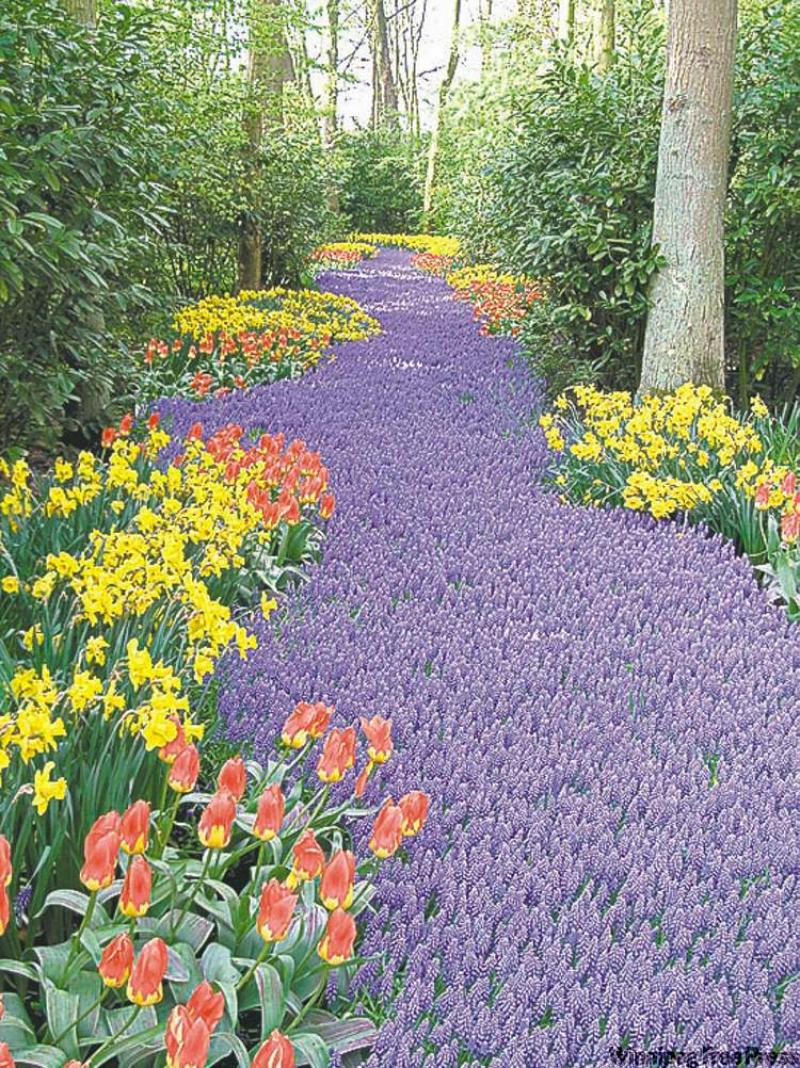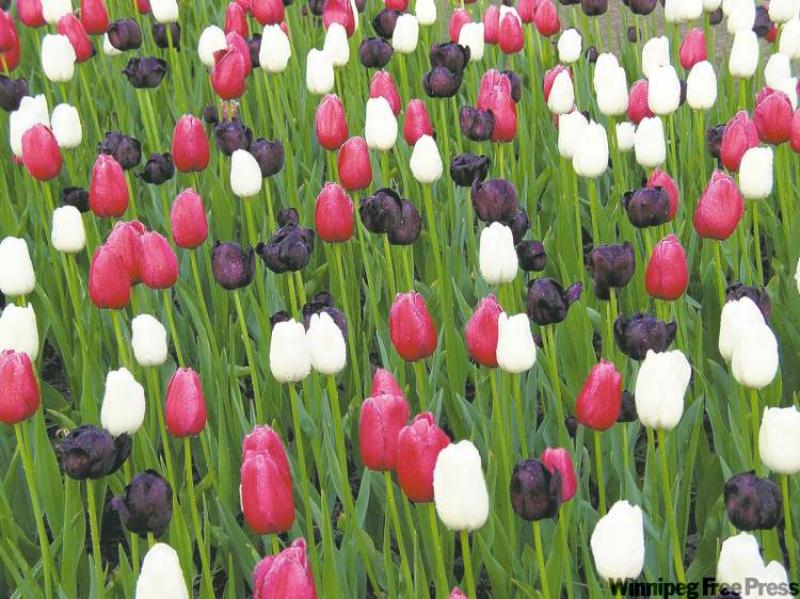
FALL is for planting! The ground is still warm and the air is cool. Planting trees, shrubs, and evergreens is always the first that comes to mind when I think about fall, but don't forget about one of the largest groups of plants available used to beautify gardens and parks everywhere -- spring bulbs.
When I ask people about spring bulbs, tulips are normally the first to be mentioned but there are many more species out there to consider. Crocus, muscari (hyacinth), narcissus and alliums, just to name a few, are some of the species that one should look at when planning their spring garden. What are the keys to choosing which bulbs to use and how to plant them into your garden? The first consideration is the site. Bulbs need to be in a location where the ground will get direct sunlight for at least a couple of hours a day and in an area that will not be too wind swept. Keep in mind that in the early spring your large trees will not be casting shade into areas that they would normally shade.
Blooming time is another important consideration. When selecting your bulbs at the garden centre you will notice on the label when each particular variety will bloom; early, mid, or late spring. Choosing a couple of different flowering times will help extend your blooming season. Next, what type of bulbs are you going to plant? Crocus and Galanthus, better known as Snow Drop, lead the way in early spring blooming; sometimes even while there is still snow on the ground.
Crocus can be planted into grassy areas as they will be done blooming well before you need to mow the lawn. If you think planting tulips might be a little too traditional, check out the 'Double Peony', 'Parrot', or 'Varidiflora' varieties which all have a twist on the norm. Tulips can range in flowering time from early spring to late spring but most fall into the mid season category. A group of bulbs is always more appealing than a lone bloomer.
One of my personal favourites for late spring flowering would have to be the allium family, which is in fact the onion family. Alliums are very tolerant of poor soil conditions, are deer resistant and make excellent cut flowers. The most familiar is the 'Giganteum' variety but definitely worth taking a look at are the 'Hail' and 'Schubertii' varieties, which have a spider-like flower and 'Drumstick' with its cone-shaped flower. These giant flowers don't only come in purple but in white, yellow, blue, pink and maroon.
We can't possibly talk about all the different species available for fall planting but these are a few of the most popular and stunning available today.
Proper placement of the different types of bulbs is essential. Plant larger type bulbs (two inches in diameter or more) eight-10 inches deep and smaller bulbs about five-six inches deep. Dig up your planting area and place, don't push, bulbs into the soil pointy side up. Add bone meal and mix in some peat moss to help with drainage. Large bulbs can be spaced five-10 inches apart and small bulbs one-two inches apart. When planting in multiples it is sometimes easier to dig a trench. Cover the bulbs with soil and water generously.
The hard work is now done and the reward will come in the spring when your bulbs are all in bloom.
Visit your local garden centre for a great selection of fall planted bulbs. Drop by the Manitoba Regional Lily Society's fall bulb sale today at the St. James Civic Centre, 2055 Ness Ave.
Chad Labbe is a landscape technician and co-owner of Shelmerdine Garden Centre where he has worked for 20 years.




